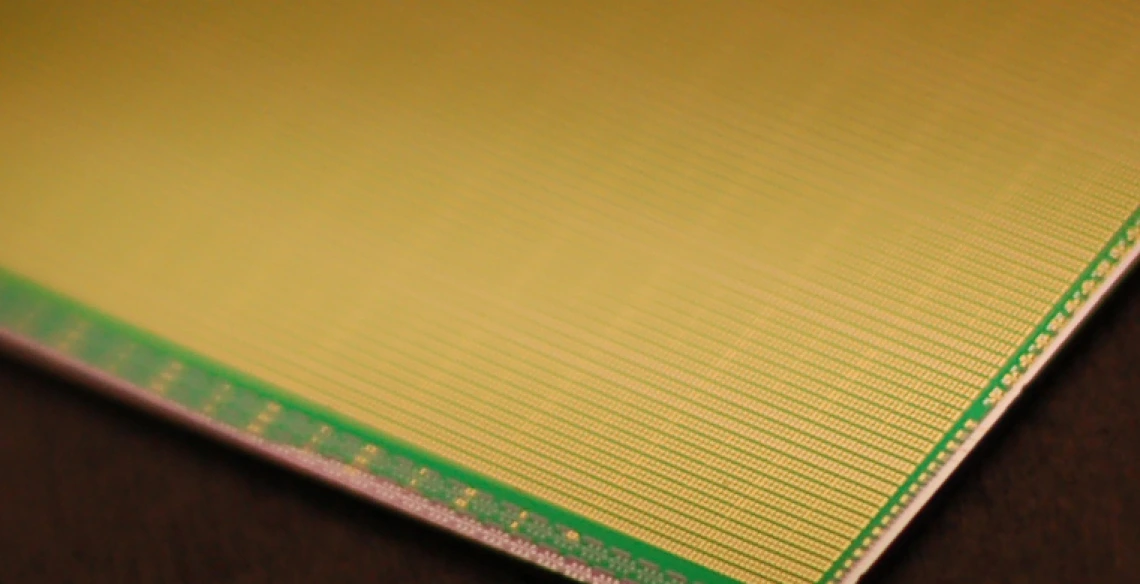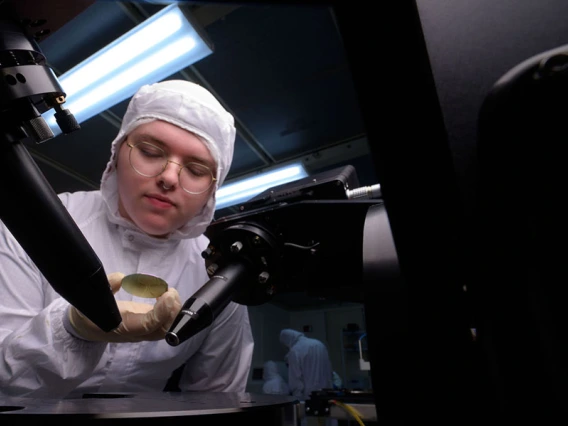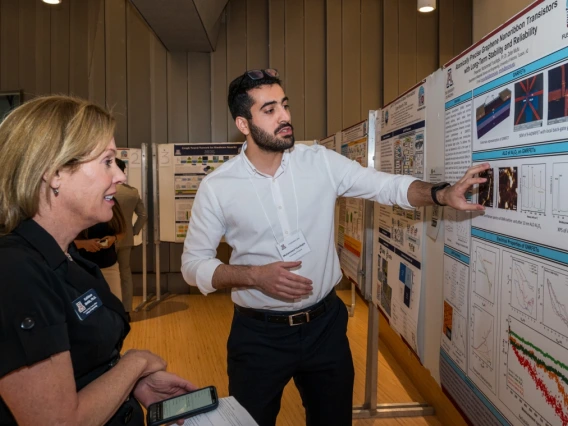Professors tackle looming semiconductor energy crisis
NSF grants totaling $3.8M advance efficiency research as ‘power-hungry’ artificial intelligence and related computing surge.

Weigang Wang and his collaborators in the University of Arizona Spin Lab fabricate computer chips that store information even when their power source is removed.
The National Science Foundation – as part of its Future of Semiconductors, or FuSe2, program – recently awarded $3.8 million for two projects involving University of Arizona engineers developing solutions for the semiconductor energy dilemma.
Energy use in technology with semiconductors – from data centers, computers and smartphones to solar cells, electric vehicles and medical equipment – has doubled every three years since 2010, according to the U.S. Department of Energy. And these products could consume nearly 20% of the world's energy by 2030.
FuSe2-funded research and education addresses key challenges in the U.S. semiconductor industry. The two interdisciplinary, multi-university projects draw on College of Engineering expertise in wireless communication and computer memory systems. Each team is receiving $1.9 million over three years.
Semiconductor technology is foundational to our modern economy and critical to addressing the grand challenges of our time, said Tomás Díaz de la Rubia, U of A senior vice president of research and innovation.
"The groundbreaking work at the University of Arizona exemplifies the innovation essential to driving technological advancements and ensuring sustainable solutions for the future," said Díaz de la Rubia.
Marwan Krunz, Regents Professor of Electrical and Computer Engineering, is contributing to a microchip, or collection of semiconductors, expected to increase energy efficiency by 10 to 100 times and improve next-generation wireless communication. The Kenneth Von Behren Endowed Professor leads the U of A WISPER center, established in October to improve NextG functionality and security. Krunz received $575,000 for his team's part in the FuSe2 project, which Arizona State University is leading.
Weigang Wang, professor of physics and electrical and computer engineering, is leading development of novel materials and devices to substantially reduce energy waste, make computer memory systems up to 100 times faster, and enable further miniaturization of electronic devices. The U of A is receiving $1.1 million of the project's total award.
Skyrocketing energy demand – as well as posing environmental sustainability concerns – threatens the market's ability to advance computing technology, according to the Semiconductor Research Corporation, an industry consortium.
"Revolutionary changes to computing will be required soon," according to SRC's Decadal Plan for Semiconductors, which cited that the world's energy production is growing only by around 2% a year.
"The teams are tackling core technical challenges for advanced technologies that will improve communications and computing while reducing energy consumption," said Liesl Folks, U of A vice president of semiconductor strategy and professor of electrical and computer engineering.
Spinning faster, more efficient semiconductors
Wang's team is "combining theoretical research and experimental fabrication to develop new materials aiming to revolutionize energy consumption across computing – from power-hungry AI systems to everyday devices," said co-principal investigator Tosiron Adegbija, an electrical and computer engineering associate professor.
One chip can have billions of silicon-based transistors, the foundation for today's computer memories. The transistors continually switch between the two binary states of 1 and 0 – the language of computers indicating electrical current on or electrical current off. Billions of binary numbers, or bits, are used to store, process and transmit data, such as text, numbers, images and video. The more complex the task or calculation, the greater the amount of energy consumed by the transistors.
The researchers are working with magnetic tunnel junctions, which may someday replace transistors in storing information. Instead of charge, magnetic tunnel junctions use a quantum mechanical property of electrons called spin to store and manipulate information. These devices have been investigated for about 25 years. But the behavior of their ferromagnetic electrodes, like those in compasses but at a nanoscale, has limited the technology's use.
Wang and his team are investigating novel devices with antiferromagnets. The difference versus ferromagnets is the alignment of spins within them. Once the antiferromagnetic device writes a 0 or 1, the information persists even when power is removed, resulting in significant energy savings.
"It's like the magnet on your refrigerator door that can stay in place for 10 years, because the spins are held together by a quantum mechanical force," said Wang, who established the U of A Spin Lab in 2012 and is a fellow of the university's Center for Semiconductor Manufacturing.
Additionally, because each antiferromagnetic tunnel junction won't interact with others like it, more can be packed tightly together in even smaller devices.
Involving and exciting students
U of A students at all levels will contribute to both FuSe2 projects. Wang also is working with Sunnyside High School to bring Tucson teachers and students into the Spin Lab.
Educating qualified workers for the semiconductor industry is crucial, said Folks.
"It is so important that we involve teachers and students in the development of new technologies so that they are excited about what the future holds," she said.



